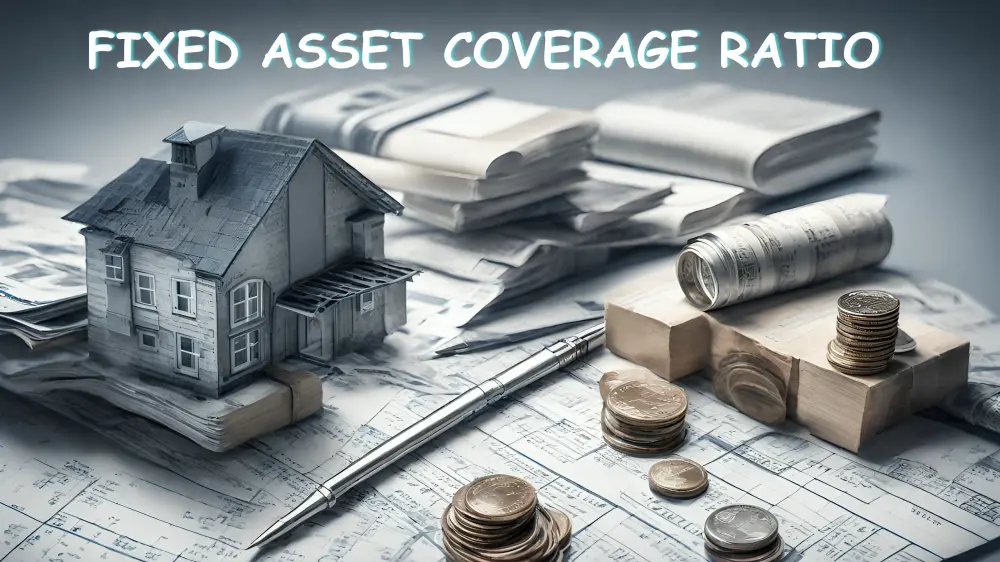An essential component of assessing the stability and performance of a business is financial analysis. The Fixed Asset Coverage Ratio is one of the most important metrics that analysts and investors use. We will examine the importance of this ratio, how it is calculated, and how it can reveal information about a company’s capacity to fulfill its long-term commitments in this post.
What is a Fixed Asset Coverage Ratio?
As a shrewd investor, you are aware that the company’s owners are its equity shareholders. The business won’t make any money if there isn’t any leftover profit. Investors in debt assume the liability of the company and show interest in the loans they are given regardless of the company’s profitability. The company must sell its assets to raise money to pay off its debts if it suffers a significant loss.
Therefore, equity and debt investors can examine the company’s fixed asset coverage ratio to comprehend the net assets and net debts of the organization. for them to comprehend how a business can pay back its debt to investors. This ratio is frequently used by business analysts to assess the financial stability of the organization. A greater coverage ratio indicates that the business is in a better position with investors. To ensure that you are investing in the correct company, you may, as an investor, be searching for a high asset coverage ratio.
Types of Fixed Asset
- Tangible Assets: The aforementioned fixed asset is made up of physical resources. Notably, depreciation applies to the majority of resources that fall into this category. Buildings, equipment, and inventory are a few of the most common types of tangible fixed assets.
- Intangible Assets: These resources fall under the category of fixed assets because they are not physical. It is important to remember that calculating intangible assets can be more difficult than calculating tangible assets. For example, it can be challenging to put a company’s current brand image into monetary terms. Intangible assets are frequently exemplified by copyrights, patents, goodwill, brand image, etc.
Fixed Asset Coverage Ratio Formula
Fixed Asset Coverage Ratio: (Total Asset Of The Company-Total Intangible Asset Of The Company)-(Current Liability Of The Company- Short Term Portion Of The Long Term Debt Of The Company))/Total Debt Of The Company In The Respective Year.
Example of Fixed Asset Coverage Ratio
- Total asset: Rs. 50,00,000
- Intangible asset: Rs. 15,00,000
- Current liabilities: Rs. 5,00,000
- Short-term debts: Rs. 3,00,000
- Total debt: Rs. 2,90,000
Thus, if we apply our formula, the result will be as follows:
= (50,00,000-20,00,000)-(12,00,000-4,00,000)/8,00,000 = 2.75
Interpretation and Analysis Using Fixed Asset Coverage Ratio
The company’s steadfast commitment to maintaining a fixed asset coverage ratio of 2.75x showcases a robust financial position, ensuring security for debt investors, shareholders, and potential investors alike. This positive signal reflects the company’s reliability and stability, making it an attractive prospect for investment in both utility and capital goods sectors. This strategic ratio, exemplified above, serves as a key indicator for stakeholders, indicating the company’s resilience and dedication to financial health.
Conversely, a ratio falling below 1x or 0.95x rings alarm bells for investors, serving as a warning sign to steer clear of such ventures. The importance of maintaining a balanced ratio is emphasized, with utility companies advised to stay within the 1x to 1.5x range, while capital goods firms are encouraged to maintain a ratio between 1.5x and 2.0x. In essence, this prudent financial management ensures the company’s attractiveness to investors and its sustained success in the dynamic business landscape.
Use of Fixed Asset Coverage Ratio
The asset coverage ratio is a useful tool for assessing an investment’s degree of risk in a business. This ratio, also known as the solvency ratio, serves as a gauge for determining the degree of bankruptcy risk.
The debt obligation of the company can be examined by the investor, shareholders, and debt investors using this ratio. Additionally, they can comprehend the ideal company’s stability, risk tolerance, capital management, and capital structure.
A ratio greater than two times will suggest to investors that there is a chance for profit. As a result, they will express interest in making investments in such a business, and it will raise money swiftly. Additionally, the high ratio shows that there is little chance of bankruptcy for the business.
Additionally, a high asset coverage ratio will have a detrimental effect on the investor for the company. Since they’ll believe that the business isn’t increasing its capital structure or optimizing investor returns. Furthermore, there is no ideal solvency ratio rate; instead, it varies according to the kind of business a company conducts.
Limitation of Fixed Asset Coverage Ratio
Non-Feasible Comparison: Generally speaking, distinct businesses with varying industries employ various capital structures. The risk level is ascertained using the coverage ratio. Nonetheless, a company’s capital structure can alter during its existence. Because of this, it is not practical to use a coverage ratio; as a result, the investor needs to understand other terms.
Accurate Interpretation: The balance sheet of the business provides the values needed to calculate the coverage ratio. In addition, the book value of assets and liabilities is included in the balance. The market value is not included. As a result, the accuracy of the ratio and interpretation cannot be guaranteed.
